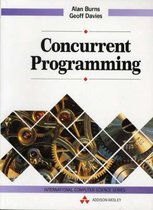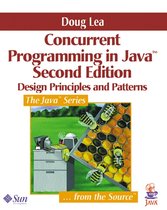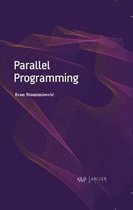Concurrent Programming Algorithms, Principles, and Foundations
Afbeeldingen
Sla de afbeeldingen overArtikel vergelijken
- Engels
- Paperback
- 9783642446153
- 29 januari 2015
- 548 pagina's
Samenvatting
The advent of new architectures and computing platforms means that synchronization and concurrent computing are among the most important topics in computing science. Concurrent programs are made up of cooperating entities -- processors, processes, agents, peers, sensors -- and synchronization is the set of concepts, rules and mechanisms that allow them to coordinate their local computations in order to realize a common task. This book is devoted to the most difficult part of concurrent programming, namely synchronization concepts, techniques and principles when the cooperating entities are asynchronous, communicate through a shared memory, and may experience failures. Synchronization is no longer a set of tricks but, due to research results in recent decades, it relies today on sane scientific foundations as explained in this book.
In this book the author explains synchronization and the implementation of concurrent objects, presenting in a uniform and comprehensive way the majortheoretical and practical results of the past 30 years. Among the key features of the book are a new look at lock-based synchronization (mutual exclusion, semaphores, monitors, path expressions); an introduction to the atomicity consistency criterion and its properties and a specific chapter on transactional memory; an introduction to mutex-freedom and associated progress conditions such as obstruction-freedom and wait-freedom; a presentation of Lamport's hierarchy of safe, regular and atomic registers and associated wait-free constructions; a description of numerous wait-free constructions of concurrent objects (queues, stacks, weak counters, snapshot objects, renaming objects, etc.); a presentation of the computability power of concurrent objects including the notions of universal construction, consensus number and the associated Herlihy's hierarchy; and a survey of failure detector-based constructions of consensus objects.The book is suitable for advanced undergraduate students and graduate students in computer science or computer engineering, graduate students in mathematics interested in the foundations of process synchronization, and practitioners and engineers who need to produce correct concurrent software. The reader should have a basic knowledge of algorithms and operating systems.
This book is devoted to the most difficult part of concurrent programming, namely synchronization concepts, techniques and principles when the cooperating entities are asynchronous, communicate through a shared memory, and may experience failures. Synchronization is no longer a set of tricks but, due to research results in recent decades, it relies today on sane scientific foundations as explained in this book.
In this book the author explains synchronization and the implementation of concurrent objects, presenting in a uniform and comprehensive way the major theoretical and practical results of the past 30 years. Among the key features of the book are a new look at lock-based synchronization (mutual exclusion, semaphores, monitors, path expressions); an introduction to the atomicity consistency criterion and its properties and a specific chapter on transactional memory; an introduction to mutex-freedom and associated progress conditions such as obstruction-freedom and wait-freedom; a presentation of Lamport's hierarchy of safe, regular and atomic registers and associated wait-free constructions; a description of numerous wait-free constructions of concurrent objects (queues, stacks, weak counters, snapshot objects, renaming objects, etc.); a presentation of the computability power of concurrent objects including the notions of universal construction, consensus number and the associated Herlihy's hierarchy; and a survey of failure detector-based constructions of consensus objects.
The book is suitable for advanced undergraduate students and graduate students in computer science or computer engineering, graduate students in mathematics interested in the foundations of process synchronization, and practitioners and engineers who need to produce correct concurrent software. The reader should have a basic knowledge of algorithms and operating systems.
Productspecificaties
Inhoud
- Taal
- en
- Bindwijze
- Paperback
- Oorspronkelijke releasedatum
- 29 januari 2015
- Aantal pagina's
- 548
- Illustraties
- Nee
Betrokkenen
- Hoofdauteur
- Michel Raynal
- Tweede Auteur
- Michel Raynal
- Hoofduitgeverij
- Springer-Verlag Berlin and Heidelberg GmbH & Co. K
Overige kenmerken
- Editie
- 2013 ed.
- Extra groot lettertype
- Nee
- Product breedte
- 159 mm
- Product hoogte
- 38 mm
- Product lengte
- 235 mm
- Studieboek
- Ja
- Verpakking breedte
- 155 mm
- Verpakking hoogte
- 235 mm
- Verpakking lengte
- 235 mm
- Verpakkingsgewicht
- 1066 g
EAN
- EAN
- 9783642446153
Je vindt dit artikel in
- Categorieën
- Taal
- Engels
- Boek, ebook of luisterboek?
- Boek
- Beschikbaarheid
- Leverbaar
- Studieboek of algemeen
- Algemene boeken
Kies gewenste uitvoering
Prijsinformatie en bestellen
De prijs van dit product is 71 euro en 99 cent.- Prijs inclusief verzendkosten, verstuurd door bol
- Ophalen bij een bol afhaalpunt mogelijk
- 30 dagen bedenktijd en gratis retourneren
- Dag en nacht klantenservice
Rapporteer dit artikel
Je wilt melding doen van illegale inhoud over dit artikel:
- Ik wil melding doen als klant
- Ik wil melding doen als autoriteit of trusted flagger
- Ik wil melding doen als partner
- Ik wil melding doen als merkhouder
Geen klant, autoriteit, trusted flagger, merkhouder of partner? Gebruik dan onderstaande link om melding te doen.








